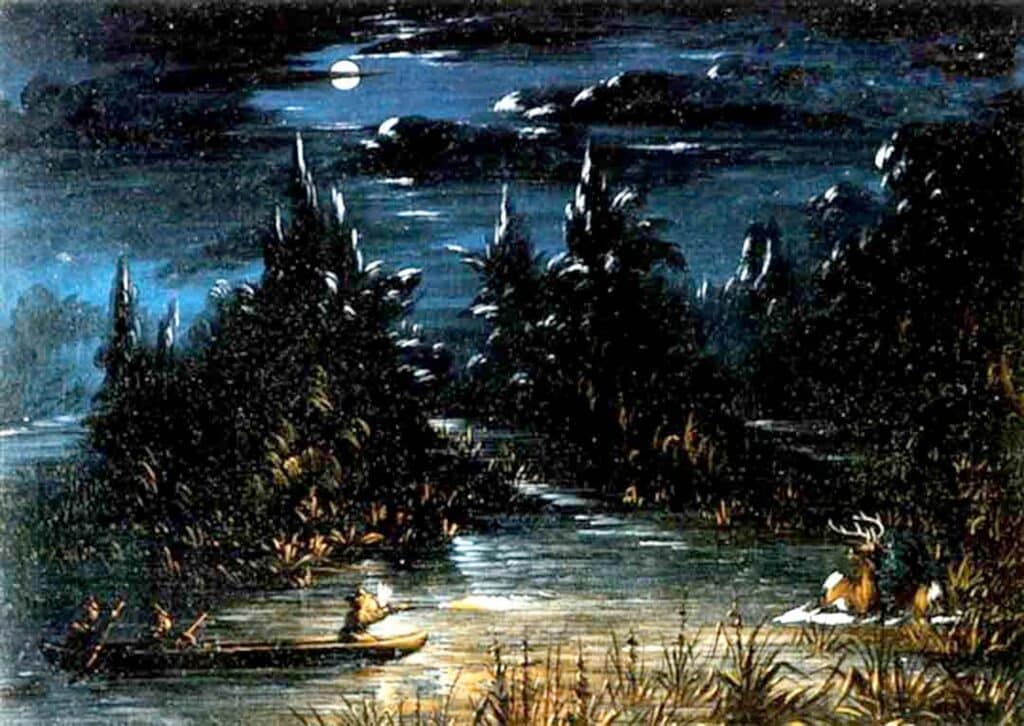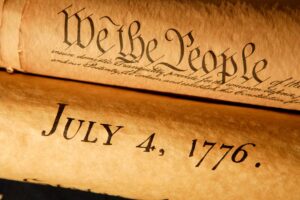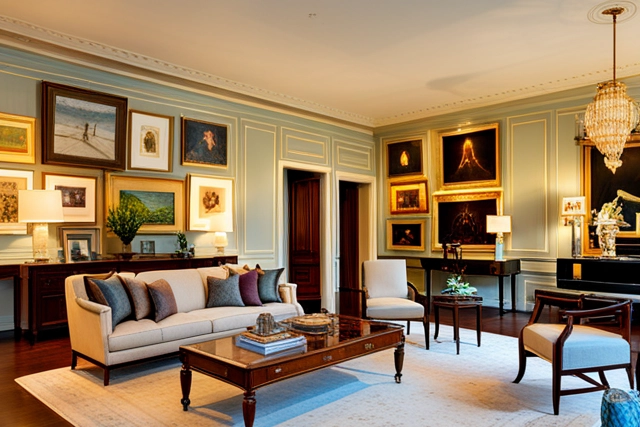Gilt framed oil on board entitled Deer Hunting by Moonlight by the artist George Catlin (American, 1796 – 1872) 18×26
Replacement Value: $500,000
Born in Wilkes Barre, Pennsylvania, George Catlin became the first American artist of stature to visit and depict the Plains Indians on his own volition, and he spent about eight years traveling among the 48 North American Indian tribes including to Alaska. His sketches and paintings are the first and most important record of land west of the Mississippi River before white settlement.
Historian Robert Taft wrote that “it can be said that Catlin was the great publicist” of the upper Missouri region as a result of his trip in 1832. . . “I find Catlin’s name the most frequently mentioned in biographical accounts of later artists of the West or for that matter one of the most frequently referred to authorities on the early history of the upper Missouri country.” Catlin also recorded Indians in South America, where he toured from 1852 to 1857, having lost his collection of North American paintings to creditors.
To help him financially and to get something in return, Samuel Colt, the gun maker and industrialist, provided Catlin with funding to go to South America and then to Alaska with the agreement that Catlin would do ‘firearm paintings’. These were “pictures of himself in dramatic situations with a Colt weapon in his hand. The number of paintings Catlin made is unknown -estimates vary from 9 to 12-, but Colt himself had a suite of 6 lithographs made, which he distributed for advertising purposes.
All are fanciful and probably correspond to no event in Catlin’s travels, but they are charged with myth. None is more wonderful than Ostrich Chase, Buenos Aires, 1857, which shows Catlin blasting away at the birds with his Colt rifle, with the rolling immensity of the Argentine pampa in the background. Here, history, industry and weapon become art.”
Catlin’s childhood was in New York and Pennsylvania, and he heard much about Indians as a youngster because his mother at the age of eight had been captured by them. The family also had numerous visitors who had traveled the frontier and whose stories intrigued him. He was educated at home and became a collector of Indian relics. In 1817,he began the study of law at Litchfield, Connecticut, and taught himself to paint portraits, mainly prominent politicians. Until 1823, he practiced as a lawyer in Luzerne County, Pennsylvania. But finding art more interesting, he moved to Philadelphia where he was encouraged by his artist friends Rembrandt Peale, Thomas Sully and John Neagle.
In Europe, he had an extensive tour and exhibition of his work, called “Catlin’s Indian Gallery,” more than 600 paintings of portraits and sketches of Indian life. This “Gallery” was well received, but in America, interest in his work lagged until after his death. The collection was offered unsuccessfully to Congress to purchase, and eventually was donated to the National Museum.








